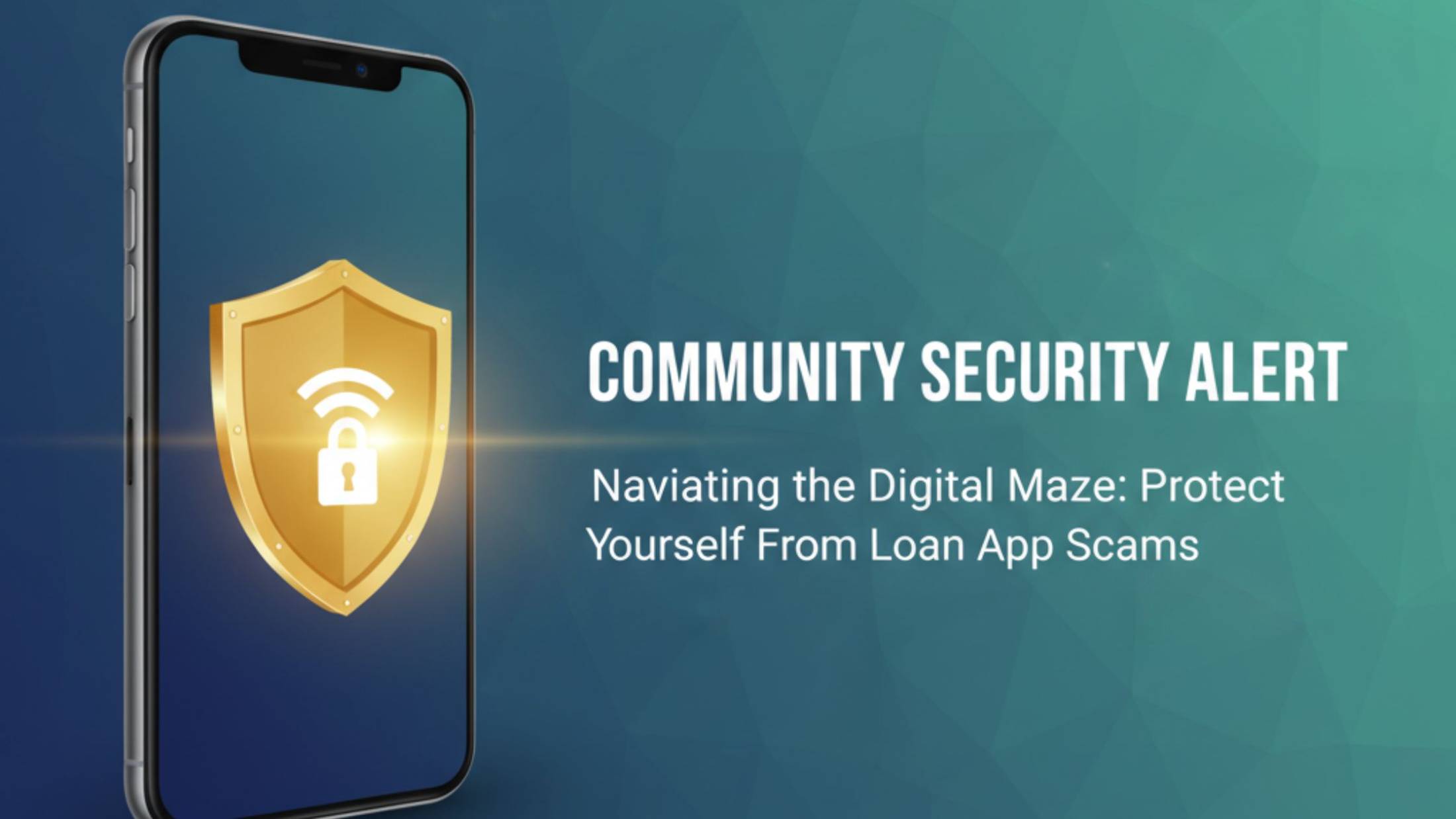Digital Lending & Consumer Awareness · 4 min read
Building Awareness: How to Educate Communities About Loan App Frauds
With the rise of digital lending in India, loan app frauds are becoming a major financial and cyber concern. This blog explains how communities, schools, NGOs, and government initiatives can work together to build financial literacy and prevent online loan scams effectively.
.BEyU46jI.jpg)
In recent years, India has seen tremendous growth in digital lending platforms offering quick and hassle-free loans. While this revolution has made borrowing easier, it has also given rise to fraudulent loan apps that exploit unsuspecting borrowers.
These fake apps often charge exorbitant interest rates, violate data privacy, and harass users through aggressive recovery methods. Therefore, building public awareness around loan app frauds is now a matter of financial security and digital education.
Importance of Financial Literacy
Financial literacy is the first line of defense against loan app scams. Most victims fall prey due to limited knowledge of banking regulations, RBI norms, or legitimate lending practices.
According to the Reserve Bank of India (RBI), only banks and registered NBFCs are allowed to lend in India. However, fraudulent apps often impersonate genuine lenders, offering instant approvals to deceive borrowers.
To counter this, community workshops, social media campaigns, and regional-language materials should focus on teaching users to spot red flags such as:
● Unnecessary permissions requested by apps
● Instant loan approval without verification
● Requests for upfront or processing fees
Once individuals learn how to verify lender authenticity and review loan terms carefully, they can protect themselves from becoming victims of digital scams.
Government Awareness Campaigns
The Government of India, along with the RBI and MeitY (Ministry of Electronics and Information Technology), has launched multiple initiatives to curb online loan frauds.
The RBI’s Digital Lending Guidelines (2022) require that all loan transactions take place directly between the bank and borrower, ensuring no third-party involvement.
Additionally, the Ministry of Home Affairs and state cybercrime cells have initiated social media awareness drives urging users to report fraudulent loan apps on the National Cyber Crime Reporting Portal (www.cybercrime.gov.in).
Popular awareness programs like “RBI Kehta Hai” and “Cyber Suraksha Bharat” have significantly empowered citizens to follow safe digital financial practices and report suspicious apps promptly.
Role of Schools and Colleges
Introducing financial education early can greatly reduce future fraud risks. Schools and colleges should integrate financial literacy modules that teach:
● How digital lending works
● How to identify fake loan apps
● The importance of reading loan terms
Institutions can invite banking experts, RBI officials, and cybersecurity professionals for guest lectures to make students aware of the risks of sharing personal data online.
As smartphone penetration increases among youth, such proactive education can prevent misuse of loan apps and promote responsible digital behavior.
NGO and Community Efforts
Non-Governmental Organizations (NGOs) and local groups are essential in reaching low-digital-literacy populations, especially in rural and semi-urban areas.
They can conduct village-level awareness drives, distribute educational leaflets, and offer counseling to victims. Collaborations with panchayats, microfinance institutions, and district administrations can extend these efforts to even remote communities.
By leveraging local influencers and community leaders, NGOs can disseminate verified information about safe borrowing and available helplines, helping to break the chain of digital exploitation.
Steps for Individuals to Spread Awareness
Every citizen can contribute to spreading awareness about loan app scams. Simple actions can make a huge impact:
✅ Share verified information from trusted government sources
✅ Educate family and peers on checking the RBI’s list of registered NBFCs
✅ Download apps only from official stores
✅ Never share sensitive details like PAN, Aadhaar, or bank passwords with unverified lenders
✅ Report fake loan apps and harassment to www.cybercrime.gov.in
Conclusion
Loan app frauds represent one of the most dangerous digital threats to Indian borrowers today. While RBI regulations and government actions are crucial, community-driven awareness remains the most effective solution.
By strengthening financial literacy, promoting collaboration among schools, NGOs, and local bodies, and encouraging responsible online behavior, India can build a financially aware society — one that borrows smartly, safely, and securely.
FAQs
1. How can I identify a fake loan app?
Fake loan apps promise instant approval, charge upfront fees, and ask for unnecessary permissions.
2. Where can I report loan app fraud or harassment?
Report it at www.cybercrime.gov.in or your nearest cybercrime police station.
3. What should I do if I already shared my data with a fake loan app?
Change passwords, alert your bank, report the app, and warn others.
4. Why is community education so important?
It helps people recognize and avoid digital lending scams before they occur.
Also Read: https://lawyerpanel.org/blog/loan-app-harassment-legal-remedies-for-victims/
Disclaimer- The information shared in this blog is for general awareness only. Every individual’s situation may differ, and the actual process or outcome can vary based on personal and legal circumstances.



